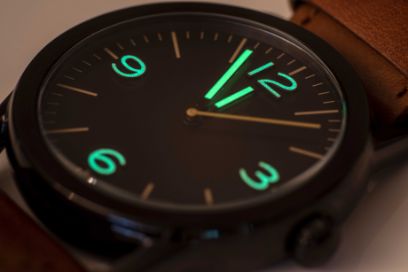- News
Programming by demonstration – robots to ensure a bright future for clocks and watches
28.02.2023 Luminous paints make it possible to tell the time on analogue timepieces even in the dark. These compounds are still applied manually, as conventional automation solutions are not suitable for this task. That’s why researchers at the Institute for Human Centered Engineering HuCE at Bern University of Applied Sciences BFH are developing a flexible robot system that can be programmed by showing it what to do.
To allow the time to be read on analogue clocks and watches even in the dark, the indices and hands are coated with a phosphorescent paint. The luminescent compound Swiss Super-LumiNova®, produced by the Swiss company RC Tritec AG, is generally used for this purpose. It is applied manually, as the process calls for a high degree of precision but cannot be automated in the conventional way due to the many product ranges and small batch sizes. As the application of the luminescent compound is a very repetitive task, the watchmaking industry is finding it increasingly difficult to recruit people to this role. So, researchers from the Institute for Human Centered Engineering HuCE at Bern University of Applied Sciences BFH, in collaboration with the Idiap Research Institut and Ciposa SA, aim to develop an innovative, flexible automation solution. The project is being supported by Innosuisse, the Swiss Innovation Agency.

Showing robots how to perform tasks
To ensure the robot system being developed meets the watchmaking industry’s specific requirements, it must work with extreme precision but also be quick and easy to reprogram for new products and designs. To make this possible, the researchers are working on programming the robot by manually showing it what to do. The machine records the worker’s movements and combines this information with measurement data from various sensors to achieve the required degree of precision. Machine learning will enable the robot to develop the right strategy for applying the compound in any given situation.
Research on the principle of robot programming by demonstration has already been carried out in previous projects at BFH led by robotics expert Sarah Dégallier Rochat, for example in the ‘Draw your Task’ project, which was supported by the ‘NTN Innovation Booster – Microtech’ funding programme. More information